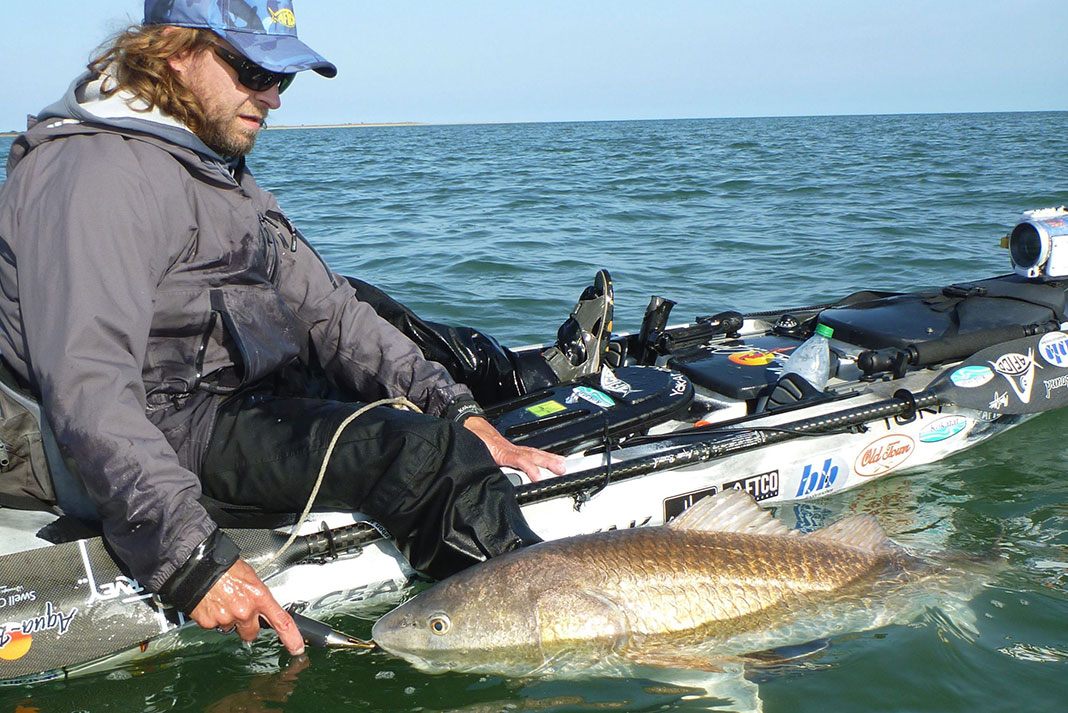The spring red drum run along Virginia’s Eastern Shore is one of the only shots kayak anglers have at sight fishing for fifty-pound redfish. The area is vast and the fish travel miles, intercepting them is a lot easier when you know the time and place.
How to Find Virginia’s Red Drum Run
On a warm, sunny day, schools of big drum will ride the flood tide into shallow water and through the surf zone. A full moon will add a foot of water to the tide and a knot to the current. An onshore wind will also raise the water level and temperature.
First, find a broad, shallow flat that drops into a deep channel. Porpoise travel the same avenues; they can be a good sign of deep water and bait. Paddle to the up-wind end of the drop off and position the sun to your back. Then stand up and search the flat for fish.

It may take miles of paddling to encounter a school of drum. The best plan is to ride the ebb tide to the islands then explore during the turn-around before hitching a ride back on the flood. While looking for signs of fish, slow troll a seven-inch swimbait on a medium-heavy rod. Set the bait 20 yards behind the kayak so it drags on the bottom and paddle a zig-zag pattern from shallow to deep and back.
The Nose Always Knows
Sometimes you’ll see schools of reds moving across the bottom. Other times they’ll give themselves away with an oily slick on the surface. Many times we smell them. A faint, fishy odor means drum are nearby.
When you spot a school, cast a seven-inch swimbait so that is lands a few yards past and a few yards in front of the fish. A slow drag across the bottom will usually get attention. When the fish strikes, come tight quickly and set the hook hard; gently palm the spool while yanking the rod tip to drive the hook home. Then hold on for a ride.
Big drum are called bulls for a reason. They fight with their head down and heart on their sleeve. Sit back and enjoy it. When the fish is close, slide your fingers along the bottom of the gill plate into a pocket in the chin perfect size for a hand. With a solid grip on the fish, loosen the drag and put the rod in a rod holder, then hoist the golden beast into the kayak.
Unhook and take pictures quickly. Hold the fish horizontally supporting its belly; we call it the drum hug. Before releasing, put the drum on a fish gripper that is tied to the anchor trolley. Lower the drum into the water and paddle forward to revive it. When it kicks to life, let it go.
Finetune Your Redfish Feel
You can spend a lifetime looking for reds on the flats and in the breakers. I have. Or you could put together an incoming tide, onshore wind and deep drop and you’ll spend more time catching.
Releasing a red drum back into the Virginia waters. | Feature photo: Ric Burnley

 This article was first published in the Spring 2017 issue of Kayak Angler Magazine.
This article was first published in the Spring 2017 issue of Kayak Angler Magazine. 




